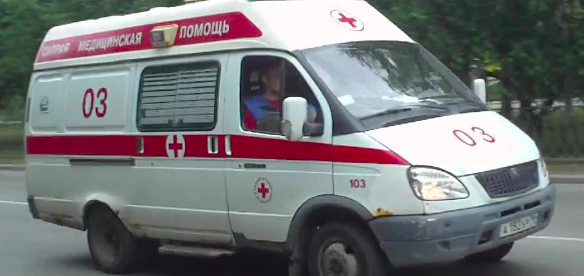How to Beat Traffic in Moscow

As a general rule, when you hear or see an ambulance behind you, you should pull over to let it pass. Not only is it typically required by law, but it’s also part of being a good citizen; the last thing you want to do is prevent emergency medical attention quickly getting to a person in distress. Which makes a fake ambulance into a really effective taxi.
That sounds like a terribly abusive idea, but that didn’t prevent some Russians from trying.
Moscow traffic is brutal. In 2016, the Guardian called the Russian capital “one of the worst cities in the world for drivers,” citing a litany of horrors. The city’s roads are poorly planned, traffic laws are regularly ignored, construction and accidents are constant, and frequent government motorcades strangle traffic. Getting around requires a workaround, and in 2013, enterprising Russians came up with one, if you could afford it. For about $150 an hour, you could hire an off-duty ambulance to drive you to your destination. As the National Post (Canada) reported, “the vehicles are said to use their sirens to scatter traffic and deliver harried businessman to meetings on time.”
This was, of course, highly illegal — but also something very hard to prevent. It’s a bad idea for the police to pull over an ambulance; what if there’s an actual emergency?
Unfortunately, that’s basically what the police had to do. The National Post continues:
“During a patrol, a medical car was stopped because it was breaking traffic rules,” said the source.
“The driver appeared strange, and did not resemble an ambulance driver at all.
“Police officers opened the automobile to check it and saw that the interior was fitted out like a high-class limousine with comfortable seats for transporting VIP passengers.”
The scam hasn’t been reported on much since the spate of stories from 2016, but that doesn’t mean it’s gone away. The Russian authorities have done little to address the issue and instead addressed the underlying problem of gridlock — but these plans left a lot to be desired. Their efforts were summarized by the Telegraph: “Mr. Putin’s spokesman said the president would spend more time working at his home, the Novo-Ogarevo estate to the west of the city, to avoid producing bottlenecks. Prime Minister Dmitry Medvedev’s office said he would be traveling more frequently by helicopter.”
Bonus fact: During World War I, Ray Kroc, the entrepreneur who would later put McDonald’s on the map, lied about his age in order to serve — while only 15, he claimed that he was 18 so that he could drive ambulances for the Red Cross. A lot of teens did similar things — it was so common, in fact, that Kroc probably isn’t the most famous underage driver assigned to the company he was placed in. Wikipedia identifies another under-18 who served in Kroc’s company: Walt Disney.
From the Archives: Blue Light Special: Police in Russia also abuse their sirens and lights, using the tools to avoid traffic. Here’s how regular drivers are fighting back. Also, Meal Ticket: How Russian dogs beat the traffic (by taking the subway!)
